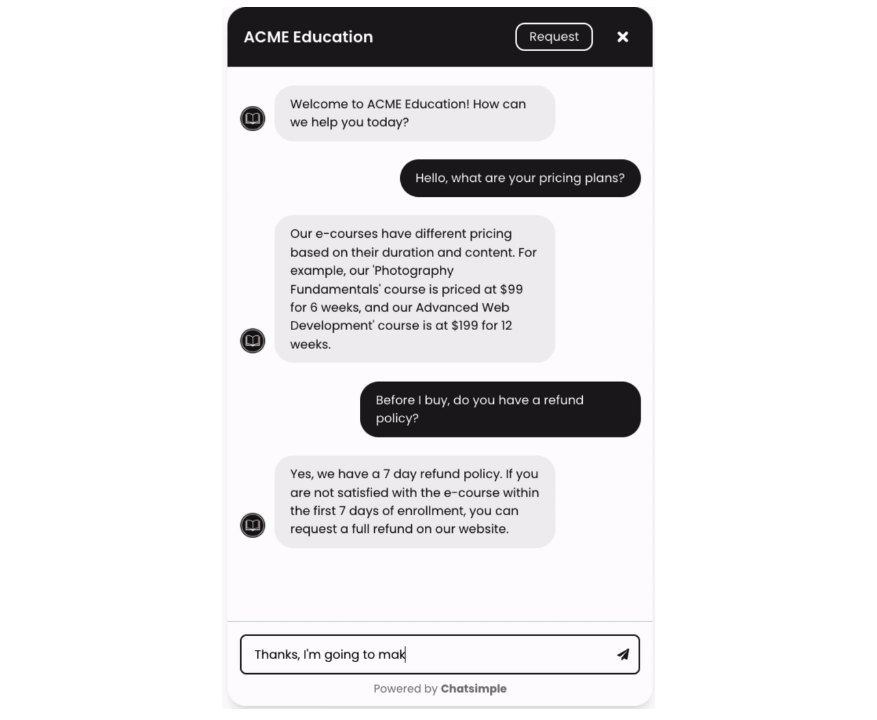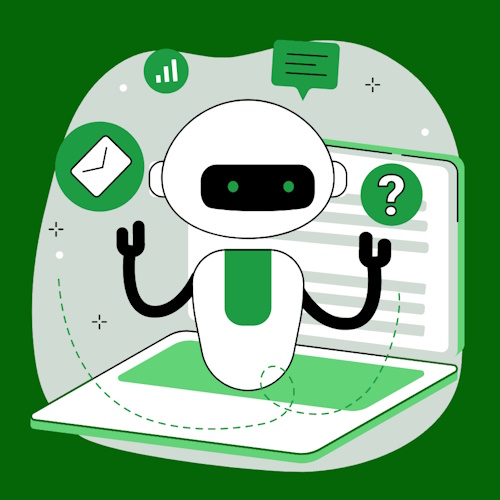Recently, I talked to two young artificial intelligence (AI) start-up companies. Although these companies are tackling completely different problems, they both present a tempting taste of the AI-powered world that is racing towards us like a runaway juggernaut.
As an aside, it just struck me how much AI is already permeating our lives in general and my life in particular. As we discussed in a previous column, I currently control my alarm clock and the lights in my home using a number of Alexa assistants scattered around the house. My AI-enabled doorbell alerts me if it observes any suspicious activity. The AI-powered Nebo Note-Taking app on my iPad recognizes my handwritten scrawls (which is quite a feat because they make no sense to me whatsoever). And I just used my Notta.ai account to generate text transcriptions of the video calls I had with the companies we are poised to discuss.
Speaking of which, the companies in question are Bardeen.ai and Chatsimple.ai. Since I don’t wish to play favorites and I would hate to have to pick and choose between them, we will simply take things in alphabetical order and kickoff with Bardeen.
We introduced the concept of generative AI in previous columns (if you missed them, for giggles and grins, I suggest you start at the end with The End of the Beginning of the End of Civilization as We Know It and work your way back to the beginning where you’ll find Gruesome Gambols Gripping Generative AI). In a crunchy nutshell, this refers to AIs capable of learning the patterns and structure of their input training data, after which, in response to prompts and queries, they can generate new data (text, images, or other media) that has similar characteristics.
Of course, the generative AI that is currently at the forefront of our collective consciousness is ChatGPT from OpenAI. The folks from Bardeen tell me that they started to work with generative AI a couple of years before ChatGPT made its debut. Their idea was to use a generative AI to help users automate boring and repetitive tasks. They told me that they initially faced a certain amount of skepticism until they demonstrated it in action. Furthermore, there’s been much less cynicism since people were presented with, and perceived the power of, tools like ChatGPT.
A lot of us find ourselves having to perform monotonous and recurring tasks. We all use multiple applications on our computers, but most of these applications don’t talk to each other. As a result, we spend an inordinate amount of time bouncing around the screen copying data from “this app here” and pasting it into “that app there.”
Professional engineers can create scripts in languages like Java or Python or Perl to do this sort of thing, but those folks are few and far between. Also, when you want something automated, you want it now! What you don’t want is to wait weeks for your automation to be developed, and you certainly don’t want to have to pay thousands of dollars (which, paradoxically, is what you are going to save if you ever manage to obtain the automation apps you desire).
There have been several stabs at creating ways to automate these activities, including the use of drag-and-drop interfaces, but they have typically proven to be a pain in the nether regions and have fallen by the wayside. Bardeen’s idea was to create a generative AI tool called Magic Box that allows you to automate the task of creating automations (if you see what I mean). Perhaps the easiest way to explain this is for you to take a glance at the 1-minute video below.
Now, we should note that the above video is more than a year old, which is equivalent to ten lifetimes in the world of AI. If you want to see what the folks at Bardeen are up to now, the following video is a little longer but has much more detail.
The current incarnation of Bardeen’s Magic Box is largely focused on web-based applications. In my case, I don’t spend too much time scraping data from websites and performing sales, prospecting, and marketing activities. What I do spend a lot of time doing is going through word documents or Excel spreadsheets or graphics packages, performing the same trivial tasks repeatedly. Having said this, these tasks aren’t always 100% the same; every now and then there’s a slight twist that’s hard to articulate but an “I know one when I see it” sort of thing.
Well, the folks at Bardeen say this is something they are currently working on. In the future, Magic Box will be able to observe what you are doing, detect when you are performing repetitive tasks (including spotting “the exceptions that prove the rule”) and then generate appropriate automations without your even having to tell it just what it is that you wish to automate.
But wait… there’s more…
In a way I feel a little guilty because I fear I’m not going to devote as many words to the folks at Chatsimple as I just did to Bardeen. “Why should this be?” I hear you ask. Well, it’s not because I don’t like the folks at Chatsimple, because they are great. In a way they are victims of their own success because their story is so simple to tell and understand (and that’s not something you hear every day).
Just to set the scene, may I remind you that it wasn’t all that long ago that the only way to contact a company was by phone or email (or via an annoying form you had to fill in on their website—a form that, as I recall, never supported sufficient characters for the message you wished to convey). More recently, these techniques were augmented by chat widgets. You know the sort of thing: “Click here to chat with one of our representatives.”
Deep in the mists of time (you know, a few years ago), these were “live chat” widgets, by which I mean there was a human on the other end of the messaging interface. More recently, the humans on the other end of these widgets started to be replaced with chatbots. The original chatbots were somewhat dire, but they got better over time. More recent chatbots are powered by generative AI applications like ChatGPT, whose conversational capabilities are pretty darn impressive. The sort of widget we’re talking about looks something like the following:

Example Chatsimple-powered chatbot (Source: Chatsimple)
Of course, this is all well and good for mega corporations and conglomerates with humongous IT departments and copious numbers of programmers scampering around, but what about small companies—perhaps even one-man shows like your humble narrator (I pride myself on my humility)?
This is the point where I found it hard to believe my eyes. I was having a video chat with Hao Sheng, who is the founder of Chatsimple. Hao told me that people can use Chatsimple to create a ChatGPT-powered widget for their website with just 10 clicks and in less than two minutes.
“Pull the other one, it’s got bells on,” I thought to myself. My second thought was that providing a widget that simply offered a link to ChatGPT would be worse than useless. There’s no point in my having people who visit my website at max@clivemaxfield.com using my chatbot to ask silly questions like “How many pineapples can an elephant eat in an hour?” (The simple answer is “lots!” However, I just posed this question to ChatGPT, which responded with four paragraphs of interesting waffle.)
I fear my disbelief must have shown, because Hao shared his screen and showed me how it was done. You start by clicking the “Get My Chatbot” button on the Chatsimple frontpage. In addition to picking a color scheme for your widget, you also point it to your website, which it immediately reads to train your own personal ChatGPT-based chatbot assistant (you can also provide additional relevant URLs and upload PDFs and Word documents with additional data). A demo of Chatsimple with file and website upload is shown below.
Hao did all of this in front of my eyes, resulting in a dedicated CliveMaxfield.com chatbot. I then asked the little scamp (by which I mean my chatbot, not Hao) a couple of questions along the lines of “What services does Max offer?” and “Is Max truly Magnificent?” All I can say is that I was very impressed with the quality of the responses.
Of course, we’ve barely touched on the capabilities offered by the guys and gals at Bardeen and the chaps and chapesses at Chatsimple, but I hope I’ve roused your curiosity sufficiently that you will feel moved to visit their respective websites to learn more. In the meantime, as always, I look forward to hearing your thoughts on all of this.






Chatsimple. Simplicity is the core of what we aim for and I’m glad to see that our mission resonated with Max.
For those skeptical about the rapid setup of a ChatGPT-powered widget, Max’s first-hand experience bears testament to our commitment of making AI accessible for all. As for the occasional “silly questions”, we see them as a fun opportunity to engage with users, adding a personal touch to AI interactions.
Hi Hao — I really was impressed by just how simple you’ve made it to create an AI chatbot widget focused on a targeted website — thanks for the demo 🙂
Salesforce’s Einstein GPT is another great artificial intelligence platform businesses can use to streamline their sales, customer service, marketing, commerce, analytics and workflow capabilities. Basically, customer service interactions, emails and offers can be automated using AI and the data your company has collected. An overview of the product can be found here: https://www.salesforce.com/au/products/einstein/overview/.
I’ve heard about Einstein GPT — it looks very interesting — it’s another example of the way generative AI is making an impact.